First-Party Data: Unlocking Insights for Seamless and Targeted Shopping Experiences
Written By: Lizzie Davey
Today’s consumers don’t just want personalized shopping experiences; they expect them.
The sheer amount of choice means that if they can’t find what they’re looking for right away, another retailer is waiting just around the corner. This increased demand for individual customer journeys has led to the growing need for first-party data.
However, it’s one thing to collect first-party data and another thing entirely to successfully use it to create great shopping experiences.
Learn more about the connection between first-party data and shopping experiences, and get answers to the questions brands have about leveraging first-party insights.
What Is First-Party Data?
First-party data is data collected through your own customer ecosystem. You’re not relying on third-party sources. Instead, you’re capturing insights directly from the people who buy from you.
While this might seem time- and resource-intensive, it’s far more accurate and reliable than any other form of data collection — especially in the wake of privacy regulations like the General Data Protection Regulation (GDPR), California Consumer Privacy Act (CCPA), and a cookieless future.
Even Apple (NPR) and Google (Cookiebot) are on the brink of removing third-party tracking cookies from their browsers, which means it’ll become increasingly difficult to lean on third-party data.
Why Is First-Party Data Important for Ecommerce Brands?
The most significant benefit of utilizing first-party data is the ability to tap into information directly from your customers — those who are closest to your products. This might be through order confirmations, shipping notifications, and customer support conversations, all of which provide a rich sneak peek into what your customers actually want and need.
What’s more, there’s no delay between capturing the information and being able to use it. First-party data gives you real-time insights that you can use to create timely campaigns.
How To Collect First-Party Data
You probably already have a wealth of first-party data at your fingertips without even knowing it. Every interaction you have with a shopper provides a new snippet of data you can use to fuel future communications.
Here are some actionable ways you can collect first-party data.
Quizzes
Quizzes are a win-win for both the brand and the shopper. Brands can ask a series of questions to gain a deeper understanding of their customers, while shoppers are entertained with an interactive activity that often ends in a personalized recommendation.
Matcha Bar has a six-question quiz for shoppers where it dives deep into their relationship with matcha to help them find the right product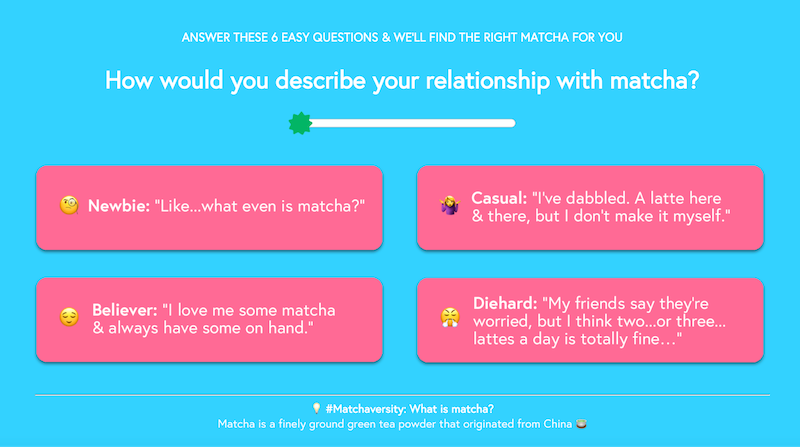 Source: Matchabar
Source: Matchabar
Customer Feedback
Customer feedback isn’t just a great form of social proof for your website; it can also provide unique insights into your customer’s behavior.
Flamingo Estate sends a review request form to customers that digs deeper than the usual star rating and short written description. It asks shoppers to share why they made the purchase, their age range, and other defining characteristics.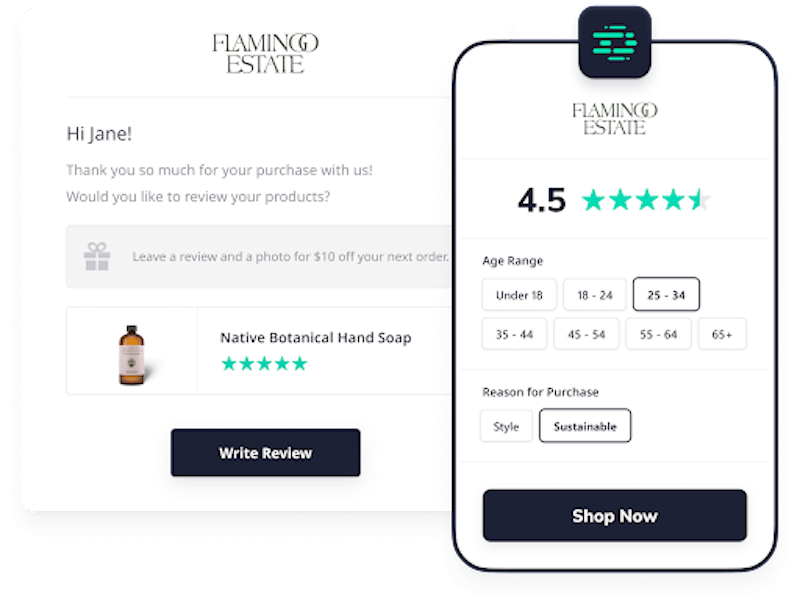
Source: Flamingo Estate
Ecommerce Metrics
Your website analytics is an excellent source of data. You can see the pages shoppers visited, how they moved through your site, and what actions they took. But for richer data insights, look at your sales dashboard.
Track order history, average order value, and which customers purchase upsells and cross-sells, as well as how much each customer spends with you and how often they make a purchase.
Loyalty Programs
Loyal customers are a great source of data. They’re dedicated brand ambassadors and interact with your brand on a regular basis. You can use the loyalty program onboarding process to collect information or encourage reward members to submit information consistently.
Tarte gifts loyalty program members extra points every time they answer a survey or leave a product review, providing rich first-party customer data.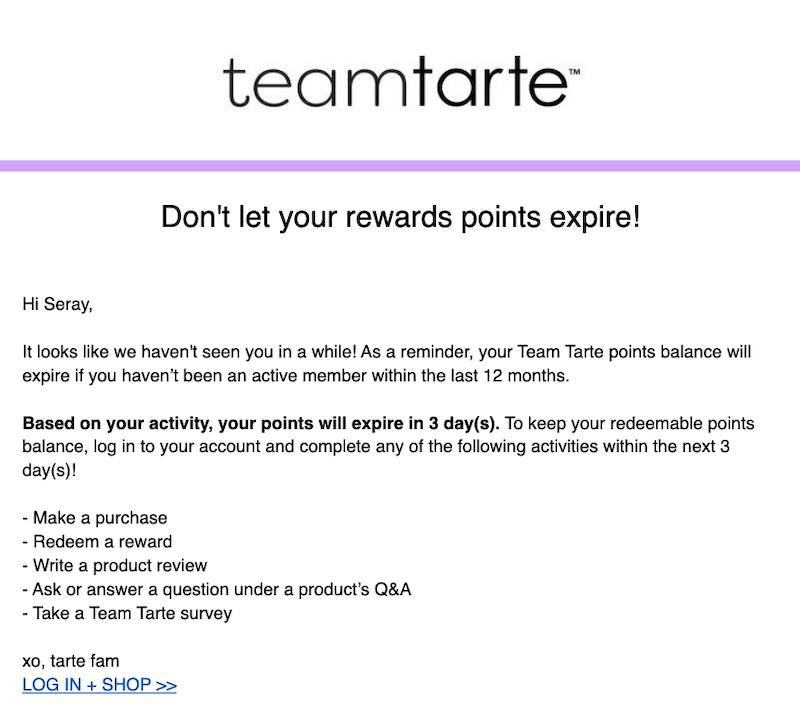
Source: Tarte Cosmetics
Surveys
Surveys are a great way to mine important customer information from your best shoppers. Take MeUndies, for example, which invites its shoppers to take a five-minute survey to get feedback on its membership experience.
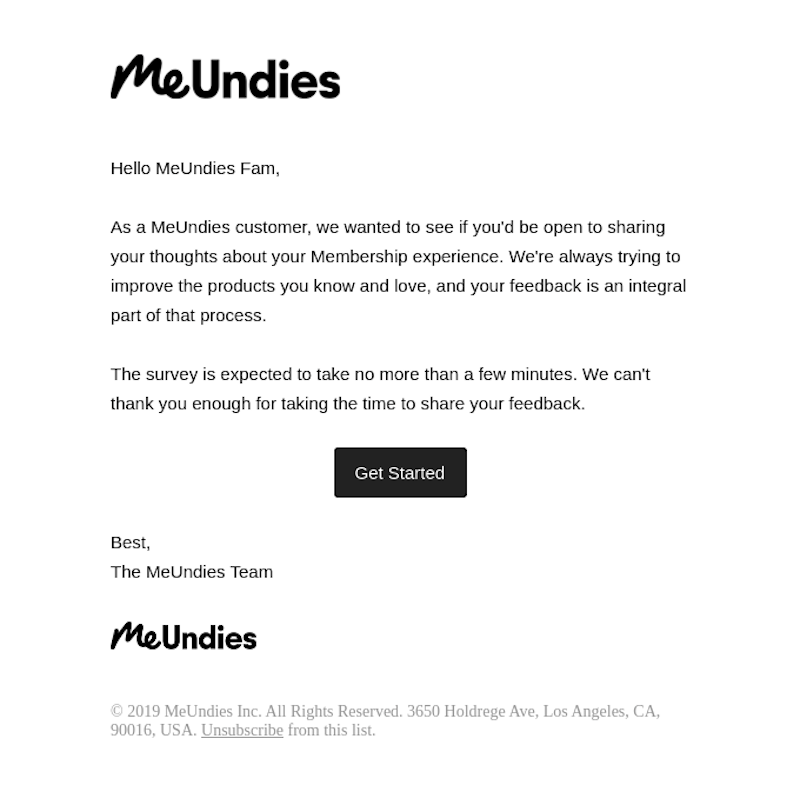 Source: MeUndies
Source: MeUndies
Mobile Apps
While it’s become increasingly difficult to tap into third-party app data, you can still collect first-party insights from your own brand app.
The Warby Parker app lets shoppers try on products, browse, and buy, all while collecting important customer information.
Chat Conversations
Chatbots remove friction from the buying process by automating answers to FAQs, but they can also be a first-party data collection powerhouse. You can get insights into the products your shoppers are most interested in and understand the journey they take.
Ritual Zero Proof makes it easy for customers to browse their favorite products and ask questions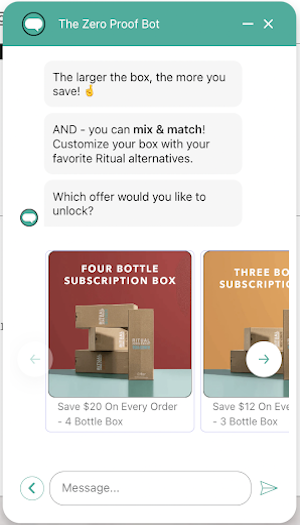
Source: Ritual Zero Proof
What Insights Can You Derive From First-Party Data?
As you can see, there are many ways you can collect first-party data — but what exactly should you be looking for? There’s a fine balance between frustrating customers by asking loads of questions and not getting enough information.
Here’s an idea of the kind of insights you can derive from the above methods:
- Customer interests
- Order history information
- Purchasing cadence and consistency
- Product or category preferences
- Preferred communication platforms
- Personal characteristics like skin type or body shape
Of course, the information you need will differ depending on what you want to use the first-party data for — see below for some of the best use cases.
How To Use First-Party Data To Enhance Shopping Experiences
Now that you’ve learned how you can collect first-party data, here’s how you can put it to use to create delightful shopping experiences.
1. Promote Future Purchases With Product Recommendations
According to research by Invesp, “49% of consumers say they have purchased a product they didn’t initially intend to buy after receiving a personalized product recommendation,” and 75% are “more likely to buy based on personalized recommendations.”
You can use previous purchase history and data about customer interests to serve personalized product recommendations that will actually hit the spot.
2. Improve Customer Retention With Replenishment Emails
There’s nothing worse than running out of your favorite face cream or coffee. This is why sending a well-timed replenishment reminder can be a great way to secure long-term loyalty and boost customer lifetime value (CLV) at the same time.
Use first-party data about order history and cadence to determine when a shopper might need to buy a replacement product and send a triggered email to remind them.
Rockin’ Wellness sends a replenishment reminder email when it thinks shoppers are ready to buy again.
3. Re-Engage Customers With Abandoned Cart Emails
The abandoned cart rate currently sits at about 70%, according to Statista. In real terms, about 30% of shoppers who land on your ecommerce store are actually buying the products they add to their cart, which Shopify says is causing brands to lose about $18 billion in sales revenue.
Use your website data to track customers who have added an item to their cart but have not made it to checkout. Send an automated abandoned cart message reminding them about the product — you can even add reviews and an incentive to tackle any hesitations.
Pipcorn sweetens the deal with a 10% discount if shoppers recover their abandoned cart.
4. Create Hyper-Personalized Journeys With Segmented Email Campaigns
Research by BCG found that retailers that offer hyper-personalization tend to see a 25% increase in revenue. The benefit of first-party data is you can collect real-life, real-time information about each individual customer and use that to create tailored experiences.
Use email segmentation to group together like-minded shoppers or those with similar interests. For example, you can create an automated email sequence for people who buy your bestsellers that promotes similar products or encourages them to join your loyalty program.
Lucchese sends customers different emails depending on the previous purchase history and gender.
5. Increase Customer Satisfaction With Better Customer Service Interactions
The customer service experience is often make or break for shoppers. According to Forbes, 96% of shoppers will leave you if they have a bad customer service experience. Let that sink in for a moment.
But what does a “bad customer service experience” look like? Research by Zendesk revealed that having to repeat information multiple times was the second biggest determining factor in bad customer service, only beaten by the inability to speak to a human.
First-party data allows you to collect previous customer service interactions, FAQs, and every communication a shopper has had with your brand so they don’t have to repeat their situation over and over again. Instead, it’s already saved and stored for future use.
Start Putting Your First-Party Data To Use
The likelihood is that you’ve already got a wealth of first-party data at your fingertips. If not, there are plenty of ways you can start collecting it, from analyzing your sales dashboard to creating interactive quizzes and feedback forms.
When the data starts rolling in, put it to use by sharing personalized recommendations, creating targeted customer journeys, and re-engaging shoppers that have disappeared into the ether.
The more data you have, the slicker the customer experience will become. Continue to gather first-party data and use it to improve your campaigns, customer service, and shopper interactions.
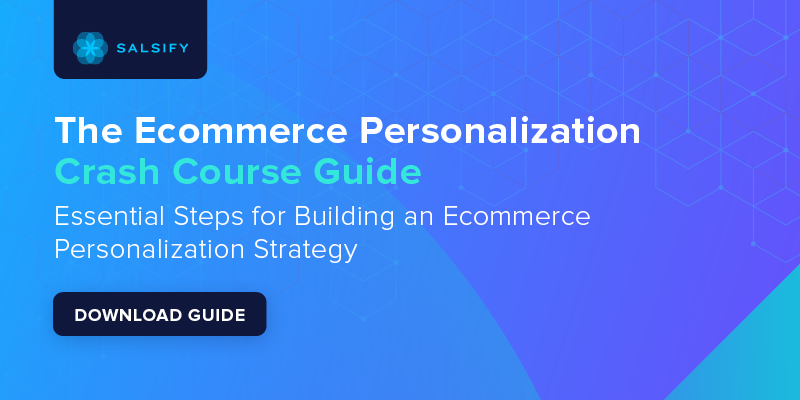
Essential Steps for Building an Ecommerce Personalization Strategy
Learn why personalization is the hottest trend in ecommerce and how to implement it in your own store with our downloadable guide.
DOWNLOAD GUIDEWritten by: Lizzie Davey
Lizzie Davey (she/her) is a freelance writer and content strategist for ecommerce software brands. Over the past 10 years, she's worked with top industry brands to bring their vision to life and build optimized and engaging content calendars.
Recent Posts
Gen Alpha Trends: How the Next Generation Influences Buying Behavior and Decisions
Do Brands Need Social Media Influencers In The Age of AI?
How Can Brands Align With Consumers’ New Year’s Resolutions?
Subscribe to the Below the Fold Newsletter
Standing out on the digital shelf starts with access to the latest industry content. Subscribe to Below the Fold, our monthly content newsletter, and join other commerce leaders.

.svg)